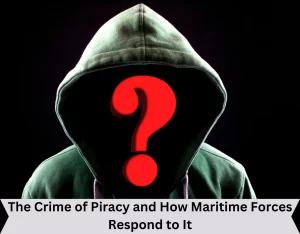ForumIAS announcing GS Foundation Program for UPSC CSE 2025-26 from 27th May. Click Here for more information.
Source: This post has been created based on the article “Expert Explains: The crime of piracy, and how maritime forces respond to it” published in “Indian Express” on 3rd February 2024.
UPSC Syllabus Topic: GS Paper 3 Security – Security challenges and their management in border areas.
News: The article discusses the causes, solutions and challenges of dealing with ocean piracy.
Background:
Recently, the Indian Navy prevented 2 piracy attempts off the Somali coast, including the rescue of 19 Pakistanis.
In recent years, the west coast of Africa, Gulf of Aden, Horn of Africa, Bangladesh, and the Strait of Malacca have seen piracy attacks.
Why are These Areas Particularly Affected?
1) Poorly policed: The coastal countries have weak maritime forces, or none.
2) Concentration of shipping traffic: They are either choke points in shipping routes where ships are forced to converge or slow down by geography, or anchorages where ships remain stationary for days before entering port.
3) Poor governance or turmoil: This leads to unemployment, poverty and consequently, crime.
4) International waters: This makes them fall within the maritime jurisdiction of several countries. This leads to legal complexities and difficulties in coordination.
Somali Piracy Threat. Source: ResearchGate.
What are The Consequences of Piracy?
- Causes panic in maritime business and leads to the establishment of high-risk areas.
- Increase in maritime insurance premiums.
- Affects the safety of ships and seafarers.
- Disrupts global supply chains.
How Can The Crime of Piracy be Tackled?
Long-Term: A long-term solution lies in rooting out misgovernance and unemployment in nations ashore, which feed maritime criminal activities.
Short-Term: The situation at sea has to be contained and stabilised by the world’s maritime forces.
What Role has The Indian Navy Played in Tackling the Problem?
Indian Navy’s anti-piracy patrol started in 2008. It has foiled several attempts by pirates at hijacking merchant ships.
The boundaries of the high-risk area that covered much of the Arabian Sea during the height of Somali piracy (2009-12) were pushed back westward primarily due to the efforts of the Indian Navy.
The Indian Navy has been practising Maritime Intervention Operations (MIO) for decades, and has developed extremely high expertise in this niche area of naval operations.
How do Maritime Forces Execute Anti-Piracy Operations?
- First, they maintain a visible presence that aims to deter pirates from carrying out attacks.
- Their ships and aircraft undertake surveillance of the high-risk area, identify suspect vessels, and report them for further investigation. This is supported by information fusion centres.
- They warn passing ships about suspect vessels and announce escort schedules (so that ships can join convoys).
- They proactively or reactively intervene to manage a developing situation, foil a piracy attempt, or rescue a hijacked vessel while trying to ensure minimum casualties and damage.
Want To Know More Topics-
On Healthcare Initiatives in the Budget – A rising tid
Situation of India’s population -Population priorities
What are The Challenges with Handling Captive Pirates?
1) Inadequate National Laws: They are often inadequate to deal with apprehended pirates.
2) Lack of effective international legal mechanism for their trial and disposal.
3) Jurisdictional Issues: The many nationalities, countries, maritime zones, flag states, etc. involved raise complex jurisdictional issues.
Question for practice:
What are the causes for piracy in the Indian Ocean? Suggest solutions to tackle the growing menace.






